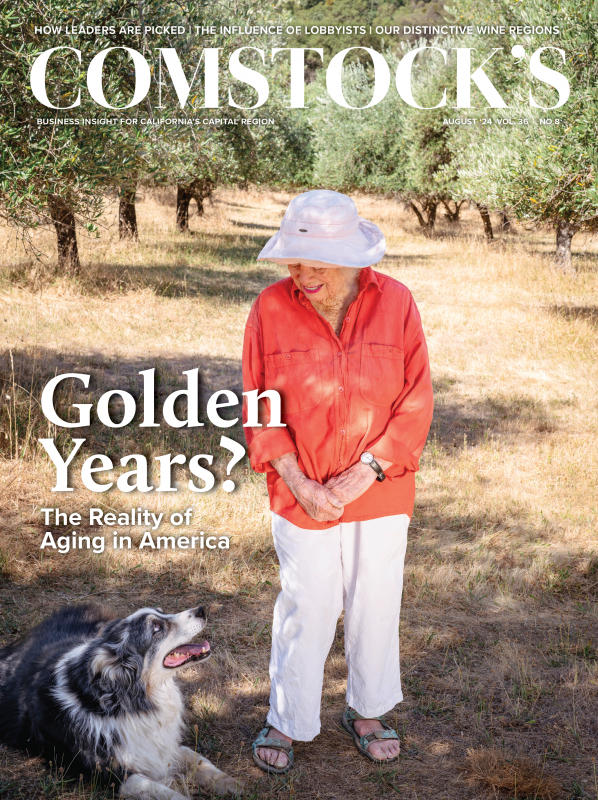There’s not a snowflake in sight at Boreal Mountain along Interstate 80 in Soda Springs the week before the July 4 holiday weekend, but the ski resort is still buzzing with activity. Inside a massive training facility and out on its adjoining skate parks and mountain bike trails, Boreal’s Woodward Tahoe is a popular year-round destination for action sports enthusiasts of any age and skill level.
“Watch this, watch this!” a group of preteen scooter campers yell out as they navigate the indoor skate park walls and turns at Woodward Tahoe on an early summer morning.
Inside Woodward Tahoe’s 33,000 square foot indoor facility The
Bunker.

Day campers from the Bay area, L-R, Jake Green, Emory Yasnas,
William Sayles and Isaac Cleary, get ready to head out onto the
floor of The Bunker.

Set at a 7,700-foot elevation and the base of a mountain, the 13-year-old Woodward Tahoe has an indoor two-level, 33,000-square-foot facility, known as “The Bunker,” filled with trampolines, foam pits, multiple skate and scooter parks, a full-size gymnastic floor and digital media production labs. Visitors to Woodward also get full use of Boreal’s climbing wall, numerous outdoor mountain bike paths, trails and skateparks — many accessible by the ski resort’s chair lifts.
A visitor to Woodward Tahoe in the summer might get to watch the training session of an Olympic skier like Eileen Gu or pick up tips from a visiting BMX pro rider from another country, such as Chile’s Renata Wiese Peña, who was a visiting instructor in early July.
“There’s something for the whole family to enjoy here; we have over 50 years of progressive teaching that we implement into all of our sports,” Tucker Norred, marketing manager for Woodward Tahoe, says during a recent tour of the complex. “We see this facility as a great opportunity for kids to be able to come in and get their energy out.”
Campers navigate a hill at Woodward Tahoe’s mountain bike path,
part of a series of trails called The Slabs.

During the summer months, mornings at Woodward are filled with day campers up to age 17, who, under coaching supervision, hone their skills in various action sports clinics or focus on other activities including mountain biking, skateboarding, scootering and BMX.
Visitors of all ages use the afternoons to hit the bike trails or skate parks, depending on the type of access ticket acquired. Another sports camp is geared to 5- to 6-year-olds who can independently ride a bike without training wheels, helping them get an introduction to Woodward’s offerings.
Boreal, which opened in 1965, and Woodward Tahoe are owned by POWDR, a corporation that operates nine ski resorts across the country, including the nearby Soda Springs and several training facilities under the Woodward name. In 2011 when Woodward Tahoe was created, POWDR took over the Woodward centers, which were founded in 1970 in Woodward, Pennsylvania, as gymnastic summer camps.
Trails border Lake Woodward at Boreal’s Woodward Tahoe

Visitors take advantage of the trampoline area

Norred touts Woodward Tahoe’s “playground mentality,” featuring structured instruction — with a maximum 8-1 student-teacher ratio for day camps — during its clinics, classes and special events.
“You don’t have to start in one place, you can go anywhere you want in the facility on any of our different tickets,” he says. “Part of the DNA of Woodward is you get to go to a place where everybody feels welcome. At a local skate park, sometimes the scooter riders aren’t getting along with the skateboarders.” He compares it to “old-school” ski and snowboard riders butting heads. “Here, we’ve created a safe space where all of these sports can interact together.”
The Boreal-Woodward complex, with a dining hall for campers and food options for the public, employs around 100 people in the summer and swells to 300 in the peak winter season, Norred says. Even during the winter, when the Boreal ski resort is in full swing, there’s still action in The Bunker.
Skateboarder Austin Brown, part of Boreal’s ski patrol team,
navigates a wall at Woodward Tahoe’s Evergreen Bowl

“We have skis and snowboards with wheels that you can train on all of the ramps here and be able to learn how to pump and bend your knees for the first time, or jump into the foam pits, so you’re able to land on a soft surface without being outside,” he says.
Norred says Woodward Tahoe “has deep roots with a lot of athletes,” which includes Olympic gold medalist skier Gu, 21, a San Francisco native who competes for China. Gu, who at age 18 became the youngest Olympic champion in freestyle skiing, has trained at Woodward for about 10 years.
“She was just training here last week,” Norred says.
Stay up to date on business in the Capital Region: Subscribe to the Comstock’s newsletter today.
Recommended For You
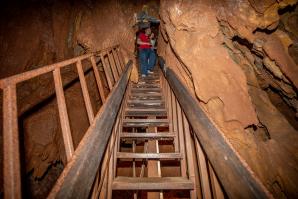
A Cool Retreat 100 Feet Below Ground
2 million-year-old Black Chasm Cavern thrills day trippers
The unassuming entrance barely hints at the secret treasures that await below. In order to access them, visitors must navigate 162 stairs in an otherworldly descent.
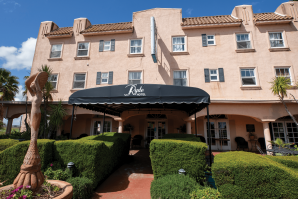
On a Dark Delta Highway, Ryde Hotel’s Party Legacy Endures
With all the food, fun and spirits, guests may never want to leave
The four-story Ryde Hotel, considered one of the most haunted hotels in Northern California, has been a Highway 160 art deco beacon for almost 100 years.
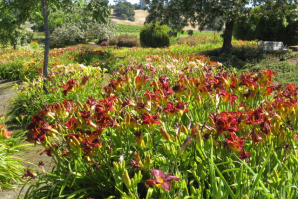
Stop and Smell the Daylilies at Amador Flower Farm
Take a break from wine tasting in the Shenandoah Valley to picnic in a garden
Nestled squarely in the midst of dozens of award-winning wineries that make Amador County’s Shenandoah Valley so unique, Amador Flower Farm in Plymouth is home to something different — an eye-popping 1,300 varieties of daylily.
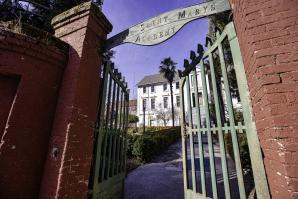
Grass Valley Museum Tells Untold History of Women During the Gold Rush
Industrious nuns, international stars and well-educated orphans
In a county known for its wealth of Gold Rush-era museums, undoubtedly some of the most compelling stories from that time reside at a former orphanage hidden within the 160-year-old walls of the Grass Valley Museum.
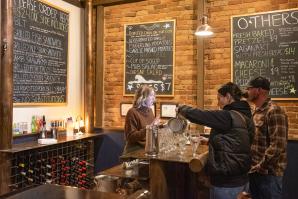
Lotus Pub Is a Low-Key Gourmet Hideaway
A place to take your time by the South Fork of the American River
It’s the first night back after Lotus Pub’s annual two-week holiday break, and at 5 p.m. when the doors swing open on this frigid Friday in January, a line has already formed.
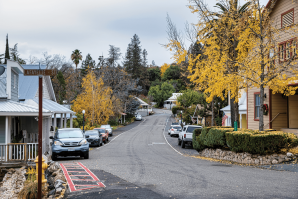
Mokelumne Hill Is Authentic California Gold Country
The entire Gold Rush-era town is a designated historic landmark
Mokelumne Hill may not be the busiest tourist hub in the Amador-Calaveras Sierra Nevada foothills loop that includes Sutter Creek, Jackson, Angels Camp and Murphys. But that doesn’t mean the uniquely well-preserved 1850s Gold Rush-era settlement along the Mokelumne River, often called Moke Hill by the locals, is lacking in things to do and see.




